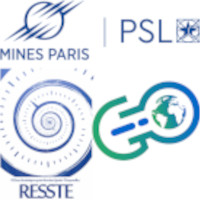Indicator variograms are structural tools used geostatistics, stochastic geometry and mathematical morphology to describe random sets—encoded by indicator (binary) random fields—defined on metric spaces such as Euclidean spaces, spheres, or graphs. In particular, indicator variograms contain valuable information on the geometry of the set boundary and are the basis of indicator kriging techniques. To date, many necessary conditions are known for a function to be a valid indicator variogram, such as conditional negative semidefiniteness, triangle and hypermetric inequalities, but a complete characterization of indicator variograms is still missing.
A related problem is the characterization of madograms, or first-order variograms, which are structural tools used in geostatistics and spatial extreme value theory. So far, only partial characterizations of these functions are known, such as being integral mixtures of indicator variograms, or limits of sequences of suitably rescaled indicator variograms.
This work aims at providing necessary and sufficient conditions for a given function to be the variogram of an indicator random field, or to be the madogram of a random field, under the sole requirement of first-order stationarity, i.e., that the random field has a constant mean value. Our proof applies on any metric space where the random field is defined and relies on distance geometry and Gaussian random field theory. As a by-product, we derive existence theorems for indicator variograms and for madograms, similar to the well-known result based on the Daniell-Kolmogorov existence theorem stating that any correlation function is the covariance function of a standard Gaussian random field.

 PDF version
PDF version
